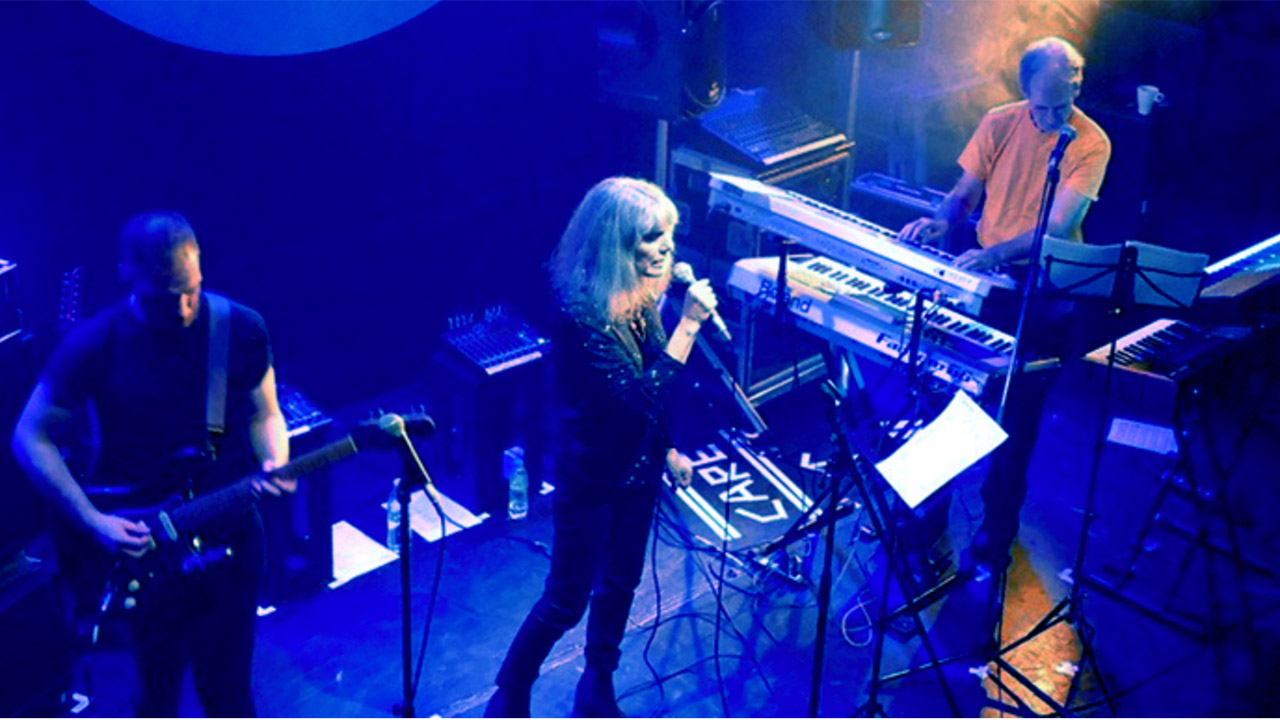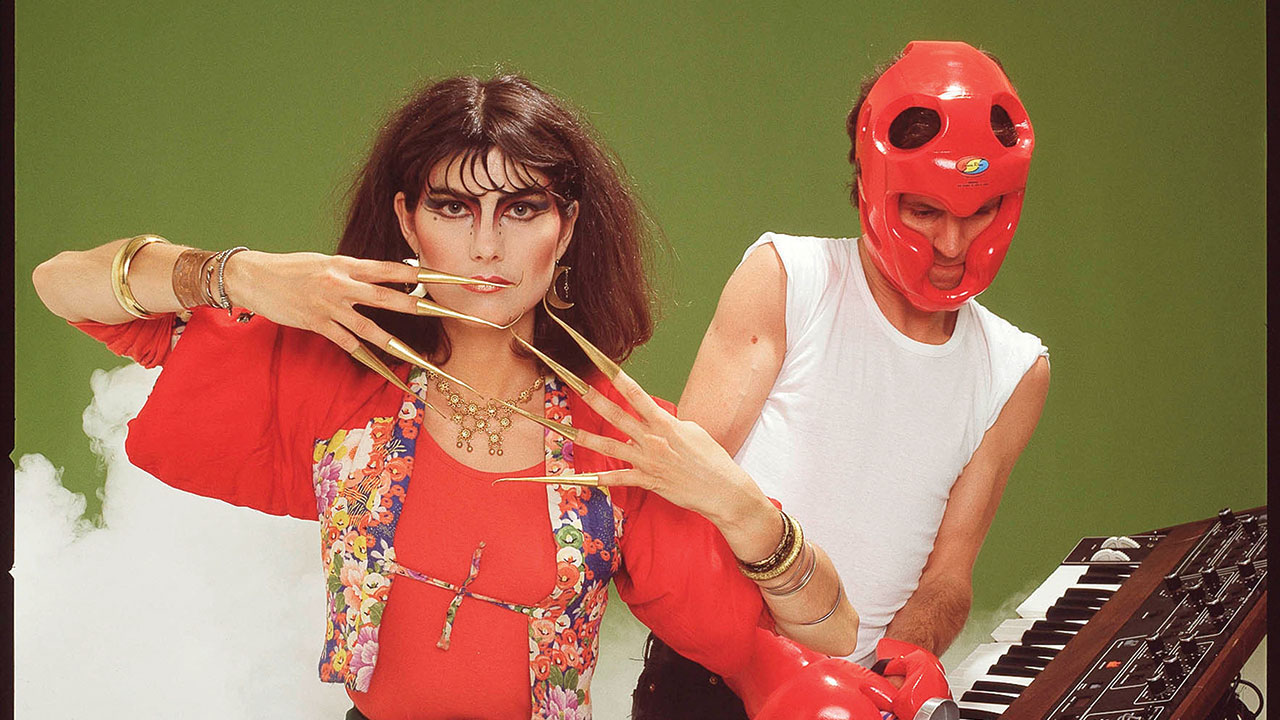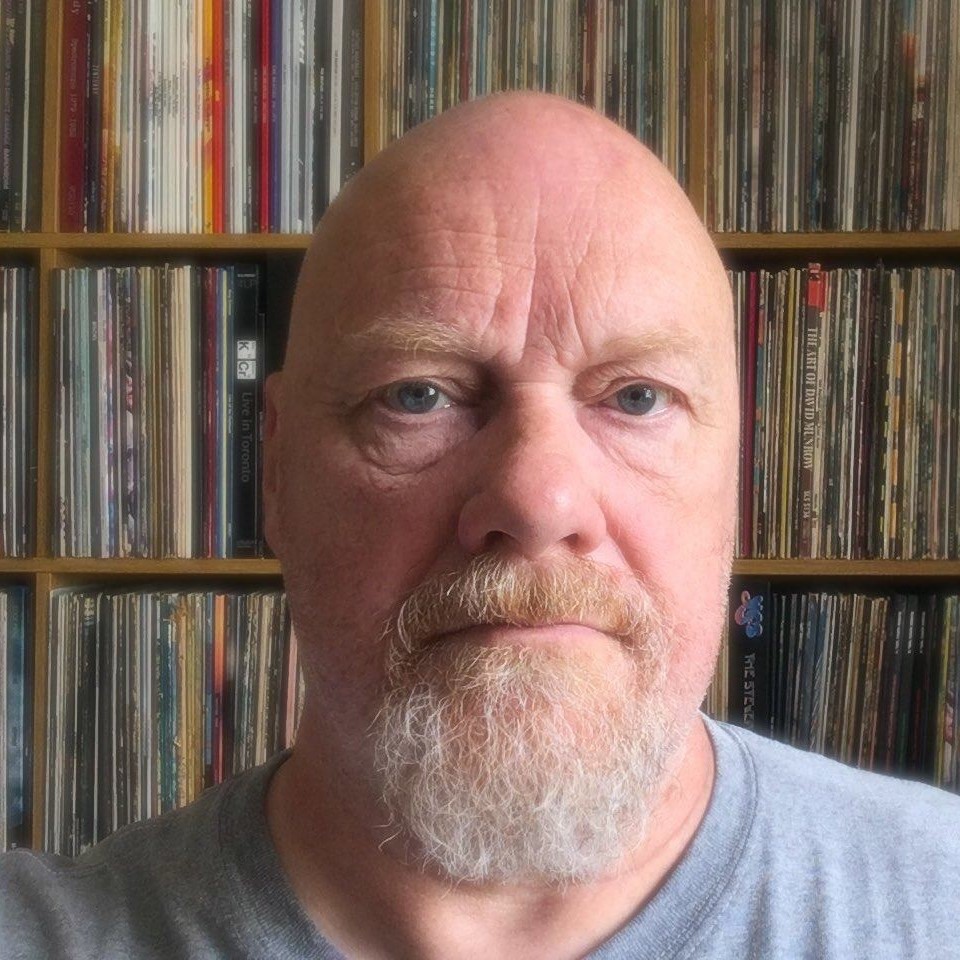In March 1981, Prog readers would have been forgiven for raising an eyebrow in surprise upon seeing Dave Stewart, previously keyboardist with Egg, Hatfield And The North and National Health, sharing a Top Of The Pops stage with The Zombies’ Colin Blunstone. They were there promoting Stewart’s delightfully skewed reworking of Jimmy Ruffin’s What Becomes Of The Broken Hearted as it hovered just outside the UK’s Top 10.
But that surprise would be as nothing compared to the shock of seeing Stewart back on the show a few months later, this time with Barbara Gaskin singing an equally idiosyncratic arrangement of Lesley Gore’s 1963 teen-angst hit, It’s My Party. When the song settled down to a four-week stint at No.1 nobody was more astonished than the duo themselves. “It was just completely bizarre,” says Gaskin, reflecting on the strange and unexpected turn in their careers that ultimately changed their lives. “We’d both been in bands prior to that and we were 30 when we had that hit, so we were kind of mature, but of course, we were very surprised when it shot up the charts.”
“It was insane,” recalls Stewart. “It was like a kind of crazy film made by a lunatic director of what could happen to serious musicians if they take a step to the left into a new dimension. It was like a fantasy film.”
His previous forays into TV had been with National Health on The Old Grey Whistle Test and as a member of Bill Bruford’s band on BBC Two series Rock Goes To College at the tail-end of the 1970s. While both of these could be said to embody the kind of show on which you’d expect to encounter Dave Stewart, fronting a single that become a best-seller in places as far afield as Germany and Australia was most definitely not.
Recording the song was intended to be nothing more than a laugh at the time, says Stewart now.
“Just the idea of having a single out on a label was an amusing idea as a side issue to the kind of music I had done hitherto. You know, ‘Wouldn’t it be funny if you got played on Radio 1? Oh, that’s never gonna happen. But it’d be funny, wouldn’t it?’”
The success of It’s My Party changed their lives in ways they could not have foreseen. Gaskin, previously vocalist with Canterbury-based folk-rock group Spirogyra, as well as recording and performing with the Hatfields as one-third of The Northettes when occasion demanded, explains that having initially enjoyed the novelty of their sudden celebrity status, the shine quickly wore off. “The negative side of it was the kind of reaction of the tabloid press, the aggression of being photographed. I didn’t enjoy that.”
Happily, some of the changes to their lives were far more agreeable. Firstly, having been friends since 1969, their relationship deepened from platonic to romantic during a hectic promotional tour in the USA. Secondly, there was the money. Were they tempted to blow it all on big houses, fast cars and copious amounts of cocaine? “Well, maybe the odd beer,” smiles Gaskin. “Because we were that bit older we didn’t spend the money on whatever people usually do in that situation.” Instead, they sensibly invested the cash in buying studio time, she explains. “It meant that we could carry on working. We were incredibly fortunate that we could do that and do it on our own. We didn’t need record company support. We didn’t go on holiday for a couple of years but spent all our time in the studio because we loved what we were doing. It’s been like that ever since. We’ve been very lucky.”
Some of the imaginative cover versions that have peppered the eight albums they’ve released include The Blue Nile’s Heatwave, Bob Dylan’s Subterranean Homesick Blues, The Byrds’ 8 Miles High and The Lovin’ Spoonful’s Summer In The City. However, they represent only a tiny fraction of Stewart & Gaskin’s output. Their original material bears many of the traits that have endeared Stewart and his writing to so many in the progressive rock community. Songs such as New Jerusalem from 1990’s The Big Idea, with its 25-piece choir, pipe organ and Gavin Harrison’s thunderous drumming, extend into long-form areas. Jupiter Rising and Walnut Tree Walk from 2009’s Green And Blue with their stirring themes and dextrous, joyful fuzz organ are instantly recognisable examples of Stewart’s gift for melody, while the title track and The Sweetwater Sea extend into a mini-suite with a fantasy sequence and Peter Blegvad’s narration – Stewart had worked with him on National Health’s Of Queues And Cures.

Stewart himself cites several tracks that have a deep personal resonance for him. As Far As Dreams Can Go is an early example of a kind of Stewart-Gaskin ballad with an arrangement that includes cello from ex-Henry Cow member Georgie Born. Simple and transparent, Stewart says the words are directed toward Gaskin. “It’s quintessential, it’s got the Stewart-Gaskin thing, whatever that is. It’s there in that song.”
Heavy Heart, from their last album Star Clocks in 2018, deals with being held back by depression or negative feelings tempered with moments of hope and redemption. But it’s also a showcase of Stewart’s ability to get under the hood of the song and create something new within a particular framework. “It’s kind of jazzy because the chords are just drifting off and there’s no tonal centre and they are quite complex,” he says. “They draw upon all the harmonic exploration I’ve done since I started writing for keyboards. I get a real buzz from devising stuff like that, an emotional spark just from that. It’s a kind of intellectual process, but it also has an emotional quotient which allows me to incorporate it in the song.”
Stewart acknowledges that by following a different direction and producing what he calls “intelligent pop” after his work with Egg, the Hatfields, and National Health, he’s seen by some fans as somehow being guilty of ‘selling out’. “Some people would want me to just be playing jazz-rock in a pub somewhere,” he says ruefully. “I wasn’t going to do a Dave Stewart Band National Health Mark II, you know – The Best Of Dave The Progressive Organ Player. That slipped away. I didn’t want that anymore. There was a kind of personal journey that led me to want to express myself differently, which led to the catalyst of recording a demo of What Becomes Of The Broken Hearted.”
When Prog speaks with the couple they’re, in Gaskin’s words, in the middle of finishing what will be their ninth album. In a sense, each of the albums they’ve done to date represents snapshots in time, she observes. “That’s an interesting thing about being in our profession. What we do is that you’re actually recording moments of your own life.” Initially, the pair work in separate parts of the house, she says. “Dave starts off with kind of unfinished things, usually backings that he’ll give me, bits of songs, such as choruses and verses, and I’ll go upstairs and record them. He then finishes them over quite a long period of time, usually.”
“I’ve always been working on a Stewart & Gaskin album since 1982,” laughs Stewart.
Additionally, they’re preparing for a rare gig at London’s Kings Place on August 5. It’s a process that begins at their kitchen table as they lay out song titles and ideas for a cohesive running order. Once that’s complete they move on to formal rehearsals with their long-term guitarist, Beren Matthews. In 2006, needing to escape noisy neighbours, the couple swapped London for the relative tranquillity of life in the country. Happily isolated, save for one nearby property, as they began preparations for their Japanese gigs with the full line-up, Stewart checked in with the owner as a courtesy and in order to maintain good neighbourly relations. “I said, ‘If it’s bothering you just come and tell us.’ A couple of weeks later he asked if we’d been rehearsing. I said yes, and he said we should have turned it up because he couldn’t hear it. So, the joke is that the only noise complaint we’ve had is that we don’t play loud enough.”
With those shows in Japan now under their belt, they’re looking forward to getting back on stage. “There’s something that you get from a live performance that you don’t necessarily find in the studio,” says Gaskin. “The best gig is where you’re listening to each other intently; they are the best moments in the music when it’s gelling. And it’s not to do with what I’m doing on my own, it’s to do with the sum of everything; that tingling-in-the-spine moment. That’s the sound of music coming together.”
Stewart agrees. “You do stuff in the gig you would never normally do. Beren and I have this thing called the Red Mist that comes down where you just go ape and you sort of almost lose control where your fingers do things you didn’t know they could do, and you just generally really express yourself in a way that rarely happens in the studio.”
Although gigging represents a fair degree of upheaval and expense and not necessarily much in the way of a financial return, playing live is also about entering into a kind of pact with the listeners, he says. At their previous London show, they were humbled to discover that fans had come from all parts of the UK and had flown in from the US, Australia, Europe and Israel. “You meet them after the gig, and they say, ‘I’ve come from Florida.’ That’s such a commitment. And I think, well if you’re coming from Florida, I can drive up the A38 from the West Country up to London.”
The duo are also engaging with fans through YouTube via their Song Talk videos. On them, they go into the details and context of their recordings and, although only two episodes are currently up, more are planned. While admittedly time-consuming to produce, it also enables them to reflect on their creative processes. Stewart recalls incorporating a live version of Song Talk as part of their recent Japanese shows. “I thought, ‘I’ll show them how I write music.’ It was really, really simple: I get a keyboard, I turn it on and I play, and that’s how I write music. It’s no mystery, really. There’s just a thing that happens, and it’s deeply personal, where you get some feedback from what you’re playing. You get an emotional spark from it. When I get that, I know it’s right. I know I’m on the right track now, and that is my musical muse. It’s the old shiver up the back.”
This article originally appeared in issue 141 of Prog Magazine.

